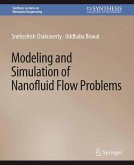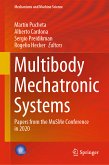Mechatronic Systems consist of components and/or sub-systems which are from different engineering domains. For example, a solenoid valve has three domains that work in a synergistic fashion: electrical, magnetic, and mechanical (translation). Over the last few decades, engineering systems have become more and more mechatronic. Automobiles are transforming from being gasoline-powered mechanical devices to electric, hybrid electric and even autonomous. This kind of evolution has been possible through the synergistic integration of technology that is derived from different disciplines. Understanding and designing mechatronic systems needs to be a vital component of today's engineering education. Typical engineering programs, however, mostly continue to train students in academic silos (otherwise known as majors) such as mechanical, electrical, or computer engineering. Some universities have started offering one or more courses on this subject and a few have even started full programs around the theme of Mechatronics. Modeling the behavior of Mechatronic systems is an important step for analysis, synthesis, and optimal design of such systems. One key training necessary for developing this expertise is to have comfort and understanding of the basic physics of different domains. A second need is a suitable software tool that implements these laws with appropriate flexibility and is easy to learn.
This short text addresses the two needs: it is written for an audience who will likely have good knowledge and comfort in one of the several domains that we will consider, but not necessarily all; the book will also serve as a guide for the students to learn how to develop mechatronic system models with Simscape (a MATLAB tool box). The book uses many examples from different engineering domains to demonstrate how to develop mechatronic system models and what type of information can be obtained from the analyses.
This short text addresses the two needs: it is written for an audience who will likely have good knowledge and comfort in one of the several domains that we will consider, but not necessarily all; the book will also serve as a guide for the students to learn how to develop mechatronic system models with Simscape (a MATLAB tool box). The book uses many examples from different engineering domains to demonstrate how to develop mechatronic system models and what type of information can be obtained from the analyses.
Dieser Download kann aus rechtlichen Gründen nur mit Rechnungsadresse in A, B, BG, CY, CZ, D, DK, EW, E, FIN, F, GR, HR, H, IRL, I, LT, L, LR, M, NL, PL, P, R, S, SLO, SK ausgeliefert werden.









